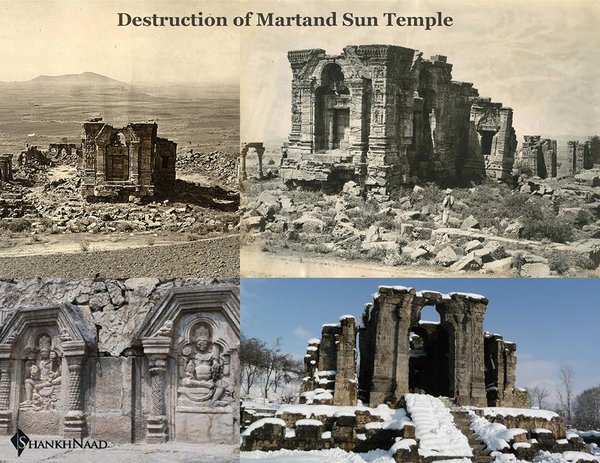In the 90s and even before that, the indigenous Hindu population of Kashmir was driven out of their homeland at gun point. With this, the glorious millennia old Hindu past of Kashmir was brought to a brutal, unceremonious end. With the Hindus forced out, it now appears that a concerted attempt is being made to eradicate the Hindu history of the valley.
One manifestation of this is the change in names of places in Kashmir in the recent past. Changes in names of places is a universally accepted way of breaking with the past.
For instance, Bombay became Mumbai, becoming more Maharashtrian and breaking with its imperial past, similarly for Chennai and Kolkata. In Africa too, many place names have been changed so as to de-Europeanize and Africanize them, for instance Verwoerdburg, named after the architect of Apartheid, Hendrik Verwoerd was changed to a neutral, Centurion. Name changes have also been used as an instrument of Colonization. For instance, Islamic invasions of India resulted in Karnavati becoming Ahmedabad, Prayag becoming Allahabad etc. It seems that in Kashmir, the Government and the Separatists want a selective break with the past. While rejecting its Hindu history, the Separatists wish to see Kashmir’s past begin from the day Islamic invasions ravaged the territory.
One of the most beautiful sites in Srinagar is the hill where a Shankaracharya temple has stood since time immemorial. For ages, the hill on which the temple stood has been known as Gopadri hill, named after Maharaja Gopaditya who constructed the temple. Islamic invasions wreaked havoc upon the temple and the hill was renamed as Takht-e-Suleiman by the invaders. Although the old name stuck around for some time, the ASI plaque at the site refers to the hill, specifically as Takht-e-Suleiman, symbolizing a break with the past.
Hari Parbat, overlooking the town of Srinagar is adorned with a temple dedicated to Jagadamba Sharika Bhagwati, Gurudwara Chatti Patshahi and several Muslim shrines. Local Kahmiri Pandits hold the hill in reverence. However, recently, the name Koh-e-Maran has become commonplace. In fact the name was accorded a de facto status by a J&K Tourism Department advertisment that openly referred to Hari Parbat as Koh-e-Marran. Incidentally, Koh-e-Maran means mountain of snakes in Farsi.
The town of Anantnag, famous for the ruins of Martand temple which was destroyed by Sikandar Butshikan (Sikandar the iconoclast) is popularly referred to as Islamabad by Separatists. In fact, there have been reports on townspeople changing the display boards of their shops to reflect the name change. Anantnag refers to the Sheshanag of Vishnu, it also means numerous springs in Kashmiri language. The history of the place name incidentally, goes back to the Puranas.
Sheikh Abdullah, in his endeavour to burnish his Muslim credentials and win credibility among the Kashmiri populace changed the names of hundreds of villages from their Hindu-sounding names to Islamic ones. There are similar attempts to change the name of Srinagar to its Mughal name of Sheher-e-Khas.
Name changes are not confined to Indian administered Jammu and Kashmir. One of the first actions taken by Pakistan after the 1948 Kashmir war was to rename Kishenganga river to Neelum. Similarly, the name of Krishna Ghati was changed to reflect the new realities and became Vadi-e-Neelam.
One can dismiss these name changes as trivial matters. After all, now that the Hindus of the valley have already been driven off, what difference does it make if one renames Ramghat Mohalla in Baramulla to Sayed Karim Saheb? But the fact of the matter remains. A concerted attempt is being made to break Kashmir’s past with the rest of India. This is a bid to deny Kashmir’s ancient Hindu civilization. With its Hindu population already decimated, the tenuous civilizational bond between India and Kashmir is coming under increasing stress.
And to think, not so long ago, Sarasvati, the Goddess of Knowledge was known as Kashmirvasini, the dweller of Kashmir, a place whose inhabitants today are more than eager to deny her existence.
“Namastey Sharada Devi Kashmir Pur Vasini Tvam Ham Prartheye Nityam Vidya Danam Che De hi mey
http://www.organiser.org/Encyc/2013/9/9/Islamisation-of-Hindu-ethos.aspx
http://www.dailyexcelsior.com/vhp-warns-changing-namess-historical-places/
